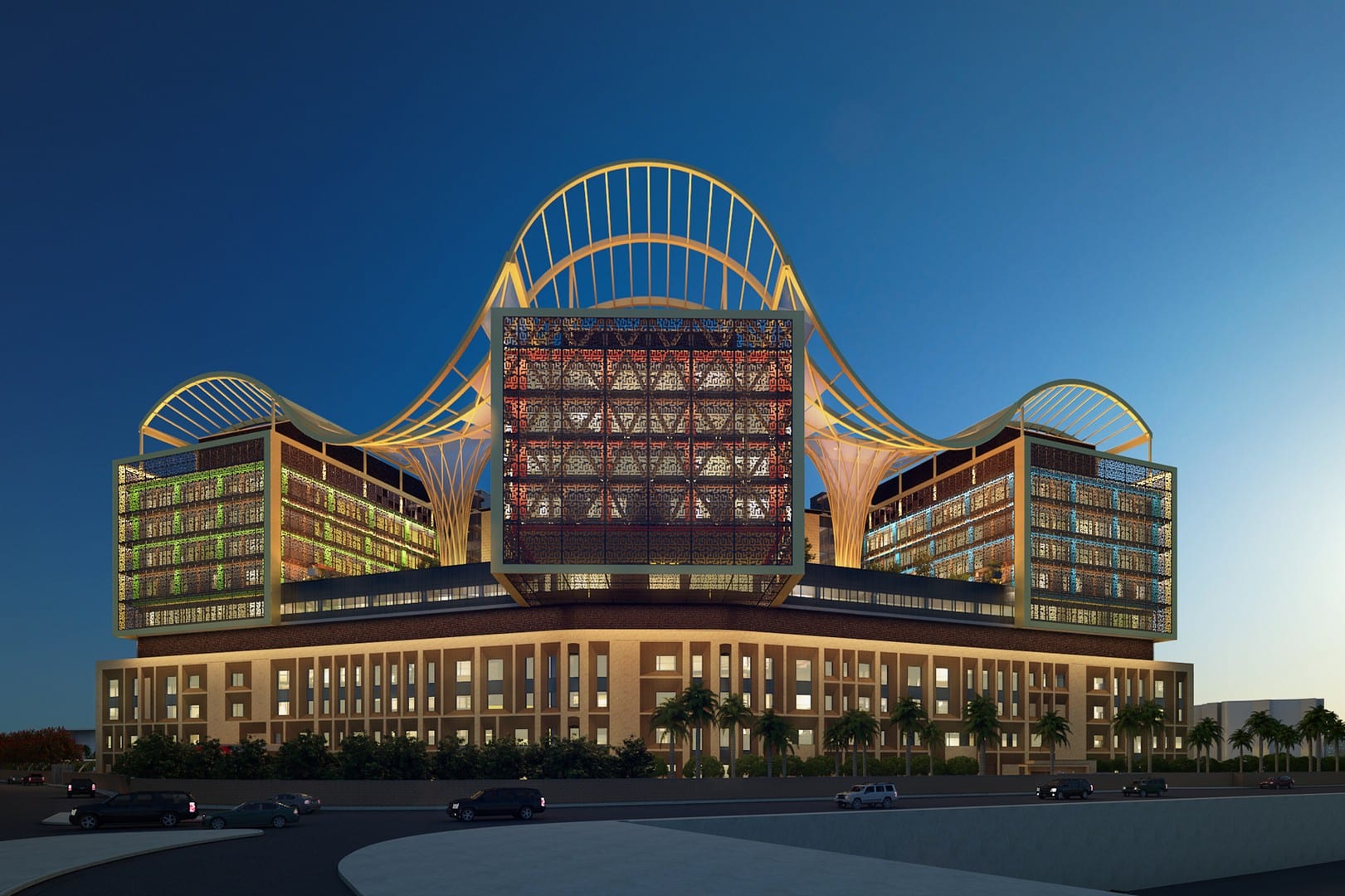
King Faisal Specialist Hospital &
Research Center
Riyadh, Saudi Arabia
The King Faisal Specialist Hospital and Research Centre is tertiary referral hospital. As a tertiary referral hospital, it offers primary and highly specialized inpatient and outpatient medical care and participates in many clinical and research studies. It is consistently recognized as one of the nation's top hospital specializing in Oncology, Organ Transplantation, Cardiovascular Diseases, Neurosciences and Genetic Diseases. A large portion of the patient population are referrals from other hospitals from across Saudi Arabia as a whole and the surrounding regions. The hospital handles around 10,000 thousand outpatient visits each year and houses over 1,600 beds and has 28 health outreach centers. It has a staff of over 1,000 doctors with over 13,500 total employees of 67 different nationalities. KFSH&RC is accredited by the Joint Commission International (JCI), the Magnet Recognition Program (American Nurses Credentialing Center ANCC) any many more.
Builtup Area : 14,53,000 SF
Services : Architecture, Engineering, Interior Design, Landscape Design, Sustainability, Environmental Graphics & Signage
Collaboration : Stantec
Share ►
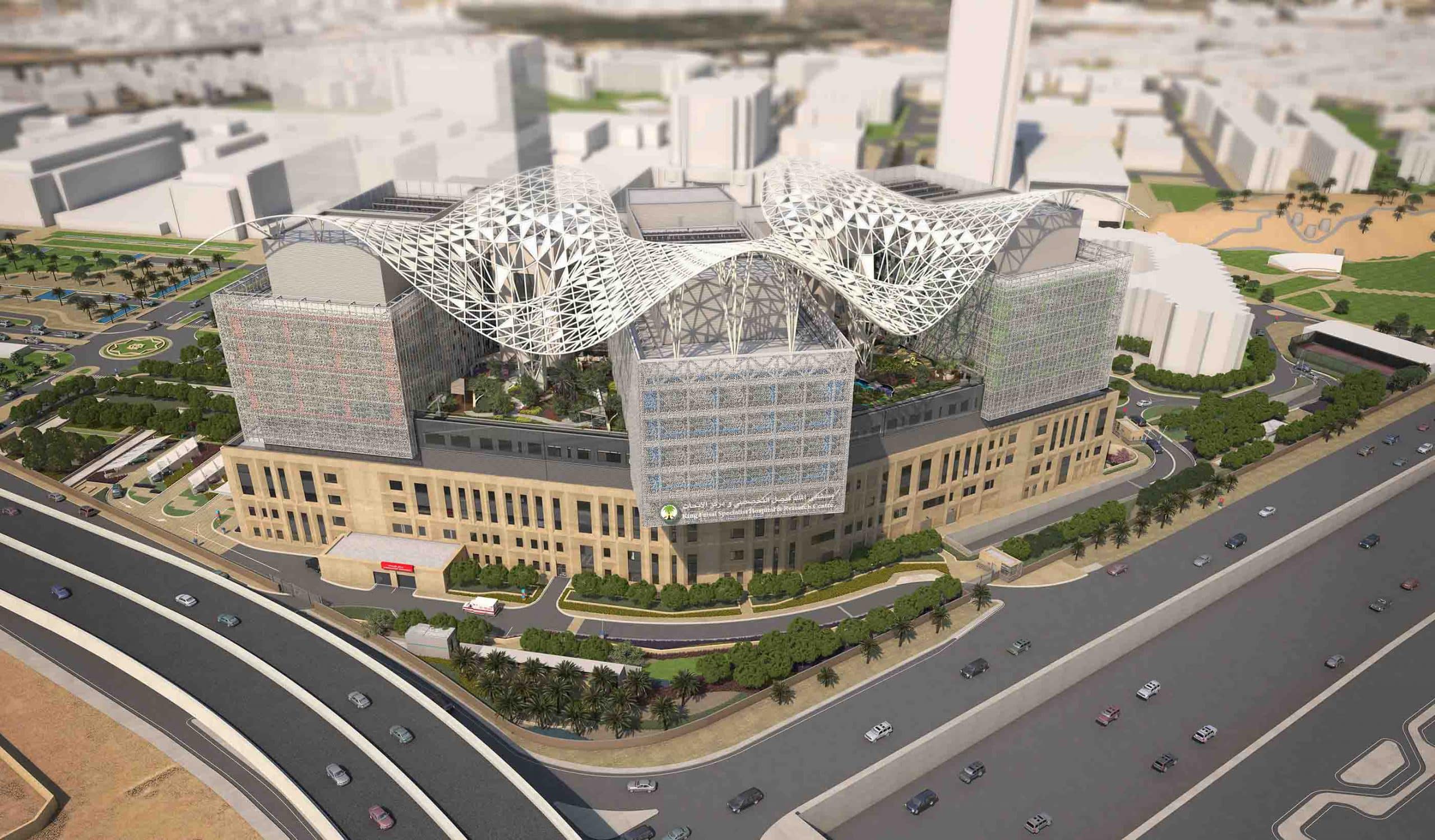
Landmark Civic Presence Integrated with Cutting-Edge Health Care
Located on a prominent corner plot of the King Faisal Healthcare Complex at the center of Riyadh, facing a nodal intersection of major city roads, this tertiary care pediatric center presents a new landmark face to major civic campus. This fact notwithstanding, the site on the campus was selected on the basis of greater functional and infrastructural integration offered here as compared to other sites under consideration. Given that this tertiary pediatric care center was intended to be at par with the best such facilities globally, these factors were critical to the site selection. Approached on the basis of the design team’s previous experience involving the design of the best global benchmark projects in the category, the collaborative team evolved a design which accounted not just for the primary function of cutting edge delivery of pediatric tertiary care but also for sensibilities towards socio-cultural and emotional requirements of patients and their families.
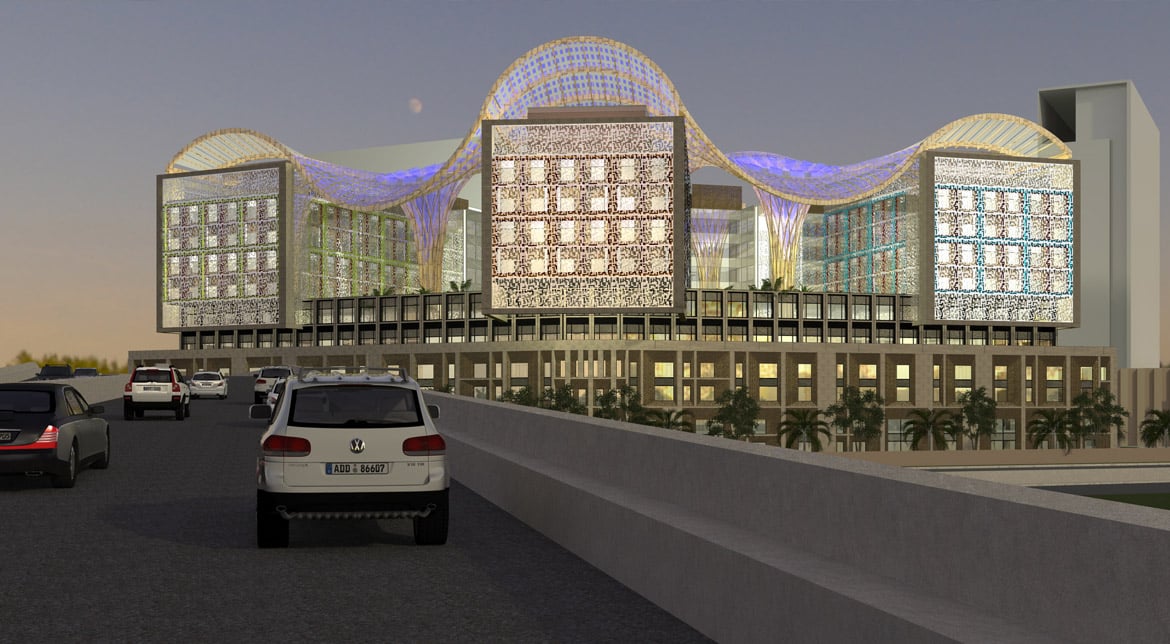
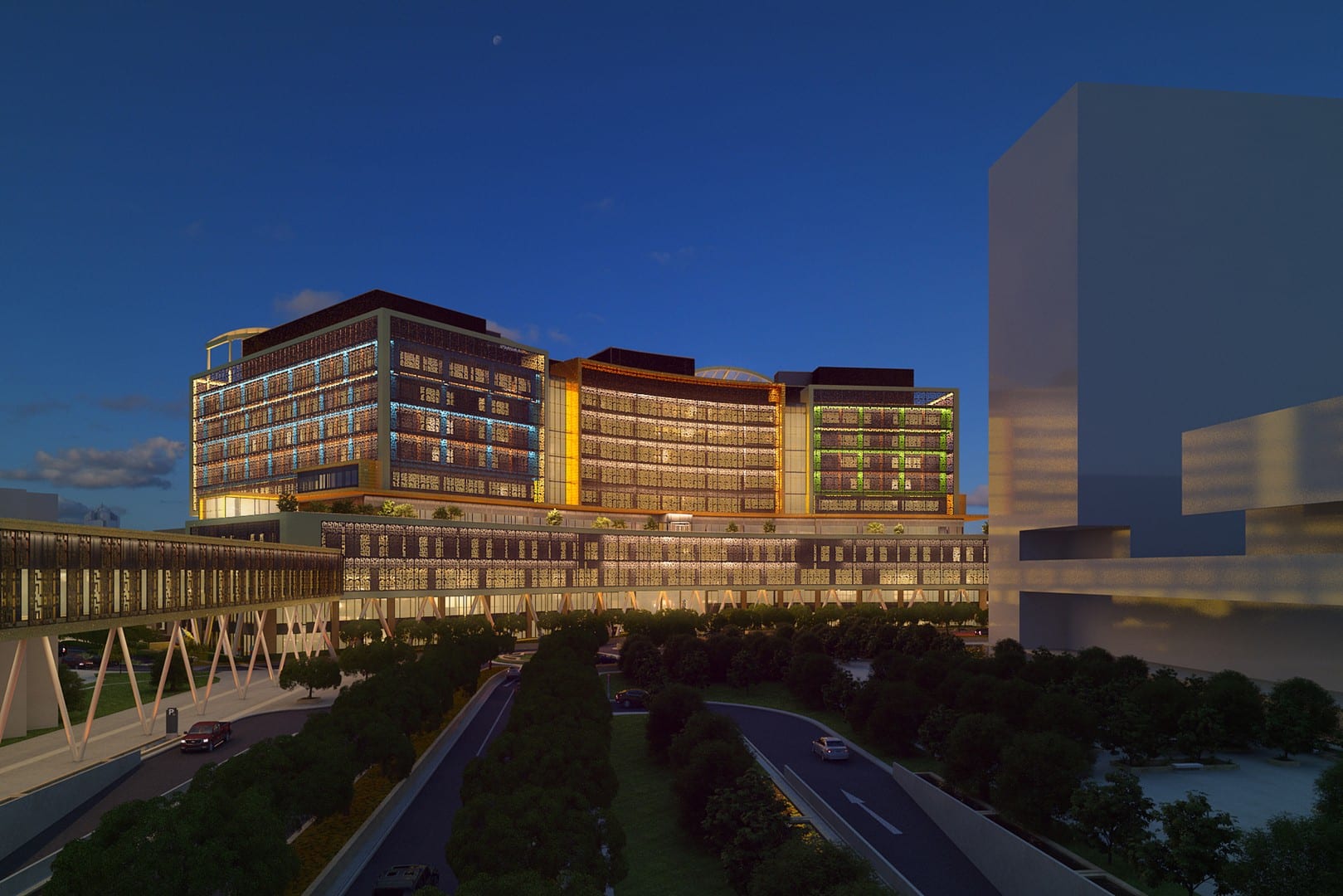
Resolved Interconnections & Adjacencies Ensure Functional Efficiency
Fanning out in a bow-shaped foot-print till the 6th floor podium, the remaining five floors rise as three towers connected by the two circulation cores. In-patient facilities including wards and the NICU/ PICU are located in the upper floors of towers, while out-patient, emergency, and paramedical/ diagnostic services are placed in the lower floors below the podium level. Facilities for doctors and other staff have been located in the intermediate levels to enable quick response/ access to both parts of the hospital. Four levels of basement take care of massive parking facilities, plant rooms for the services, stores and other infrastructure, including a connection to the underground service tunnel of the campus through the lowest basement level.
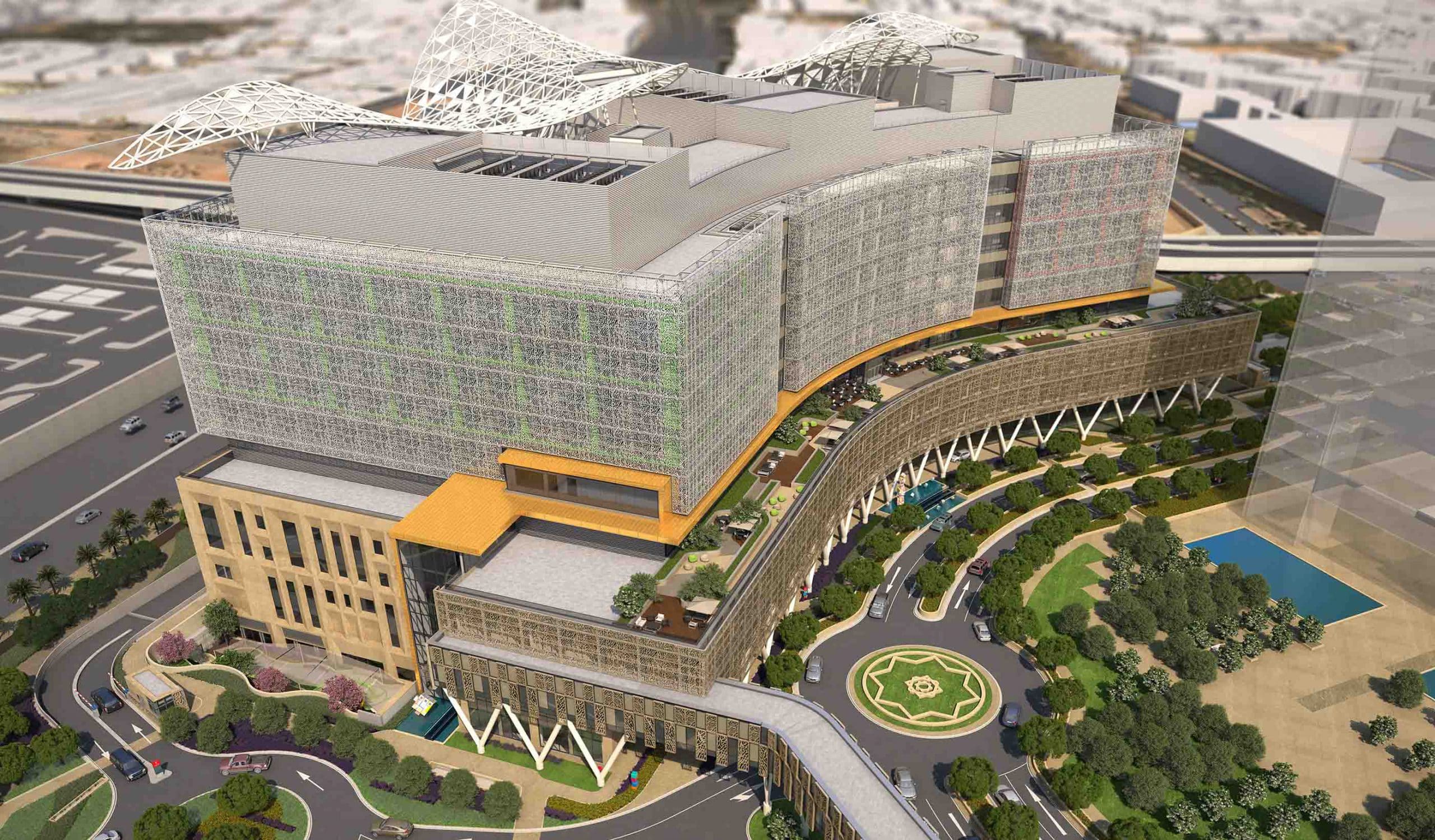
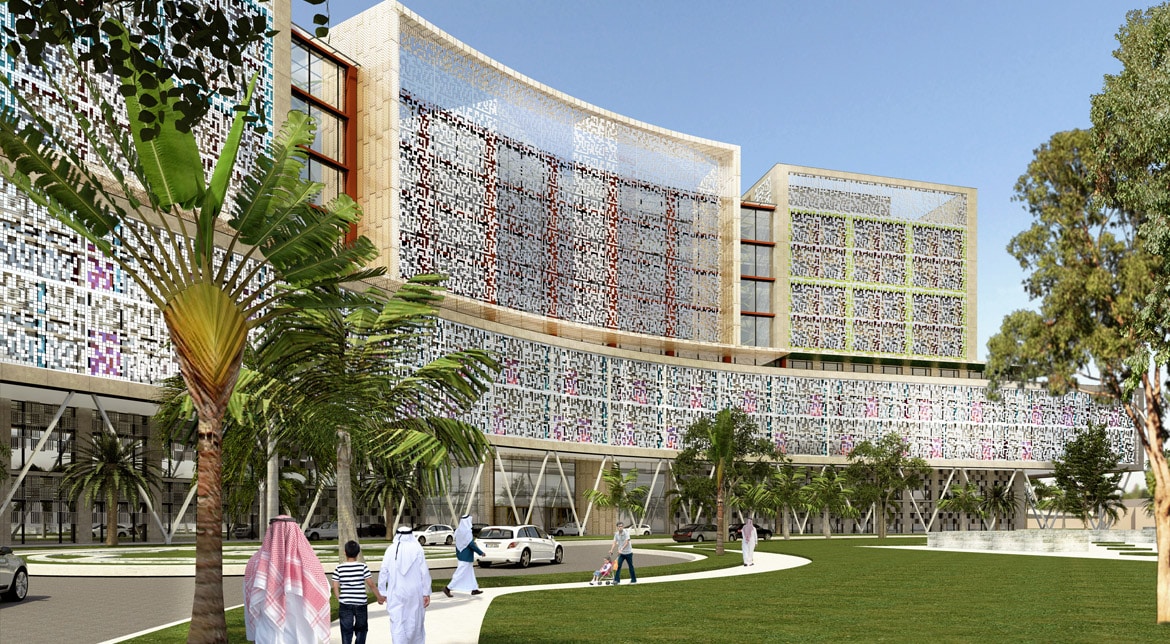
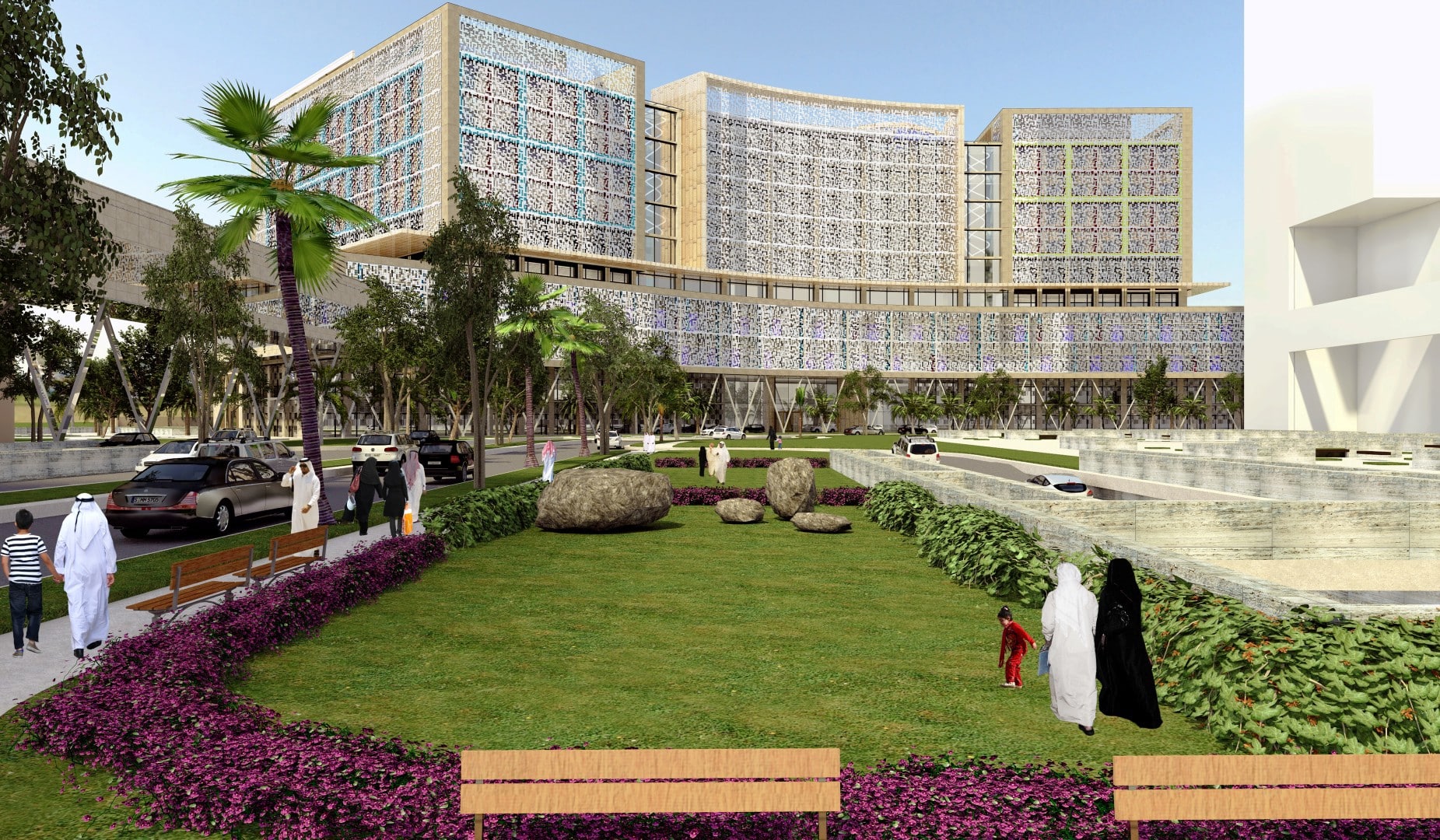
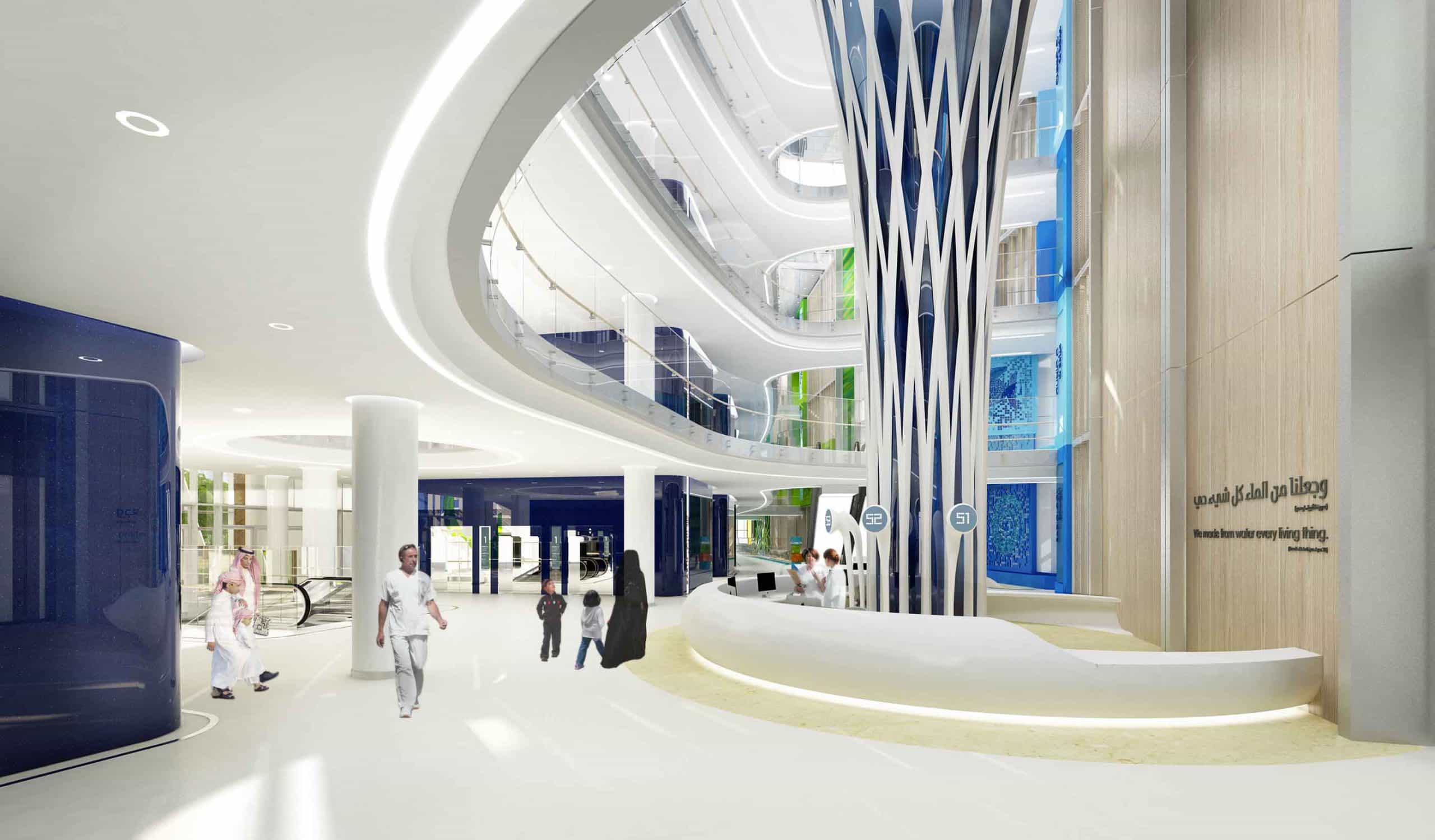
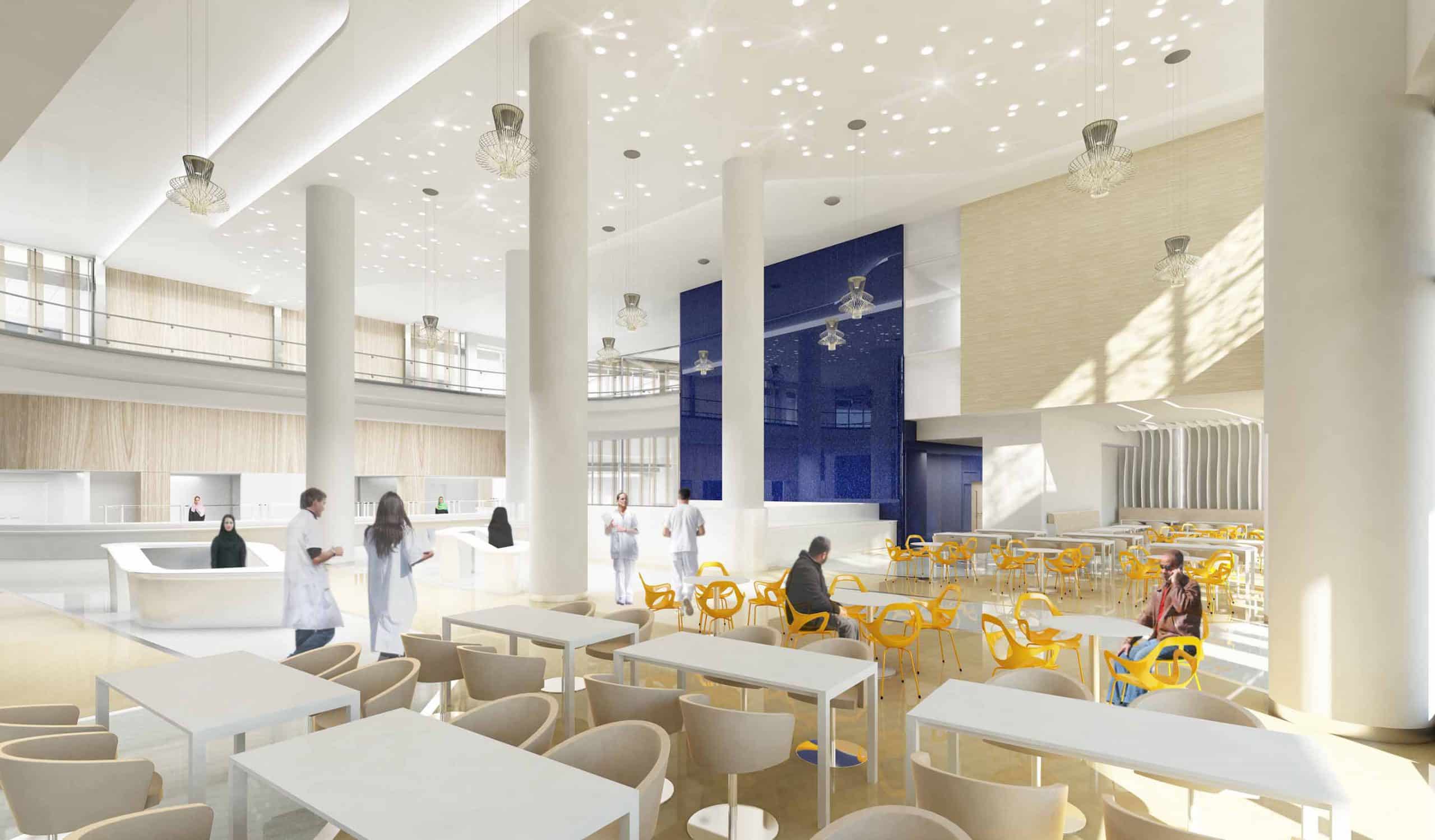
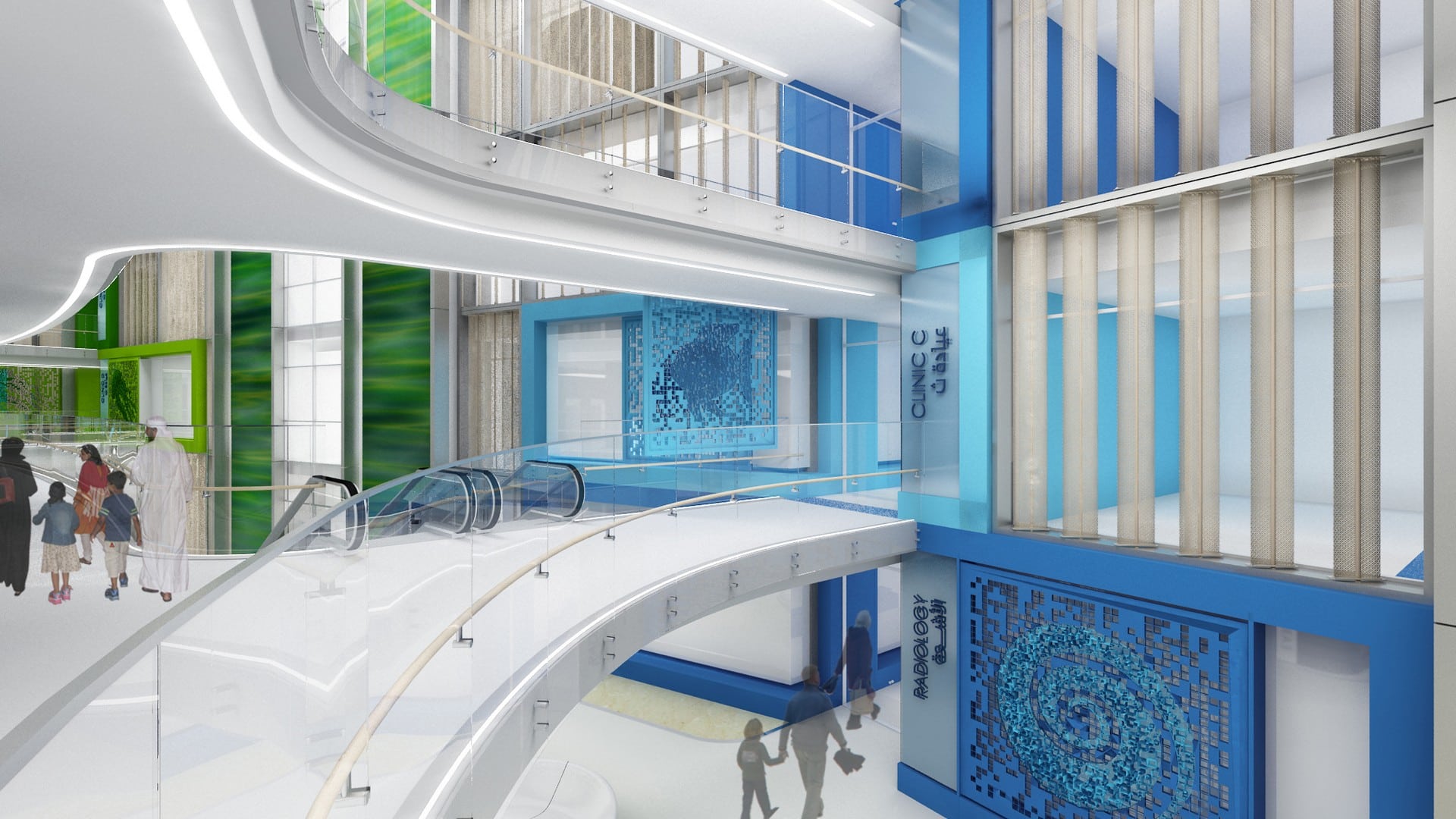
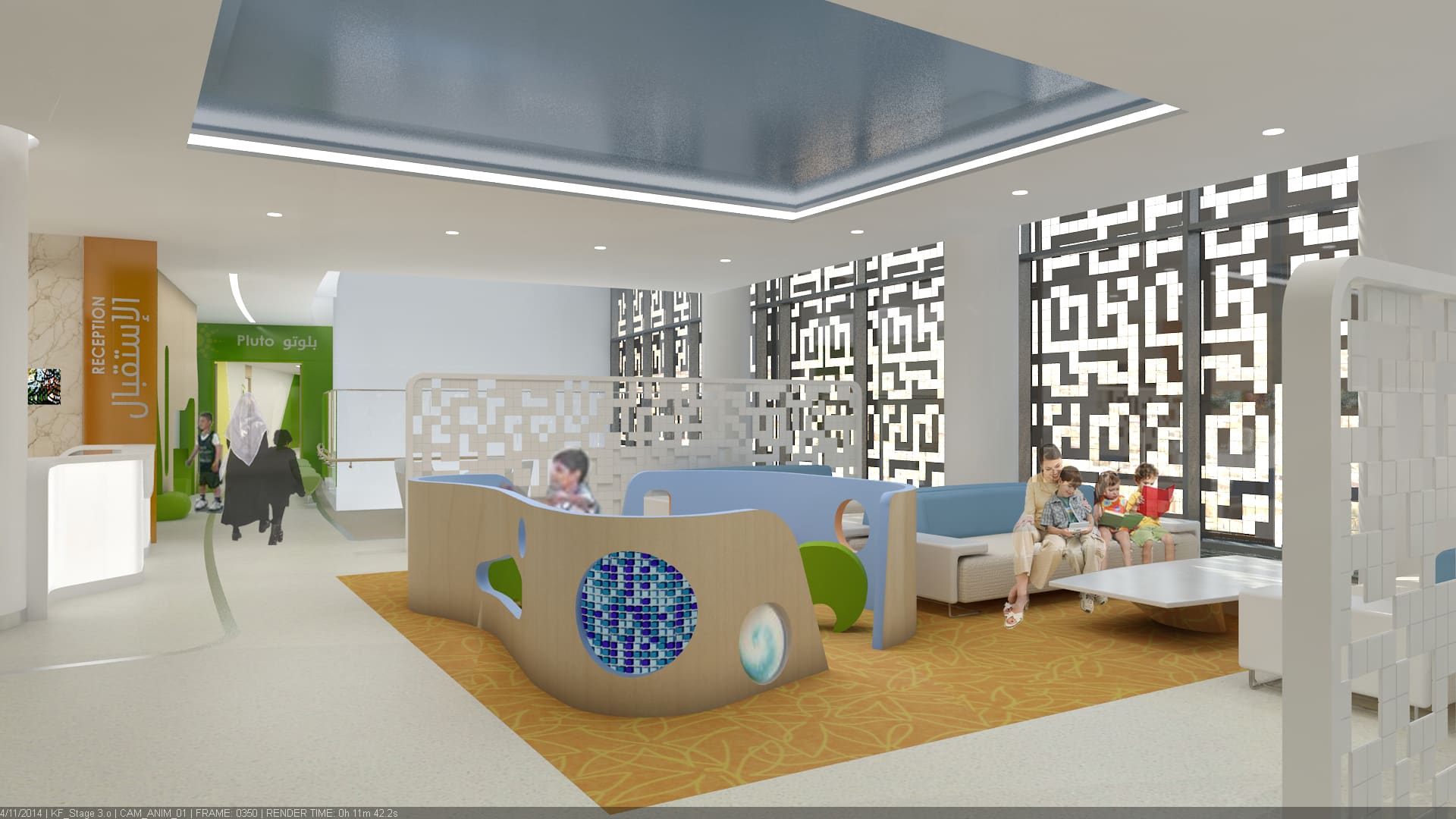
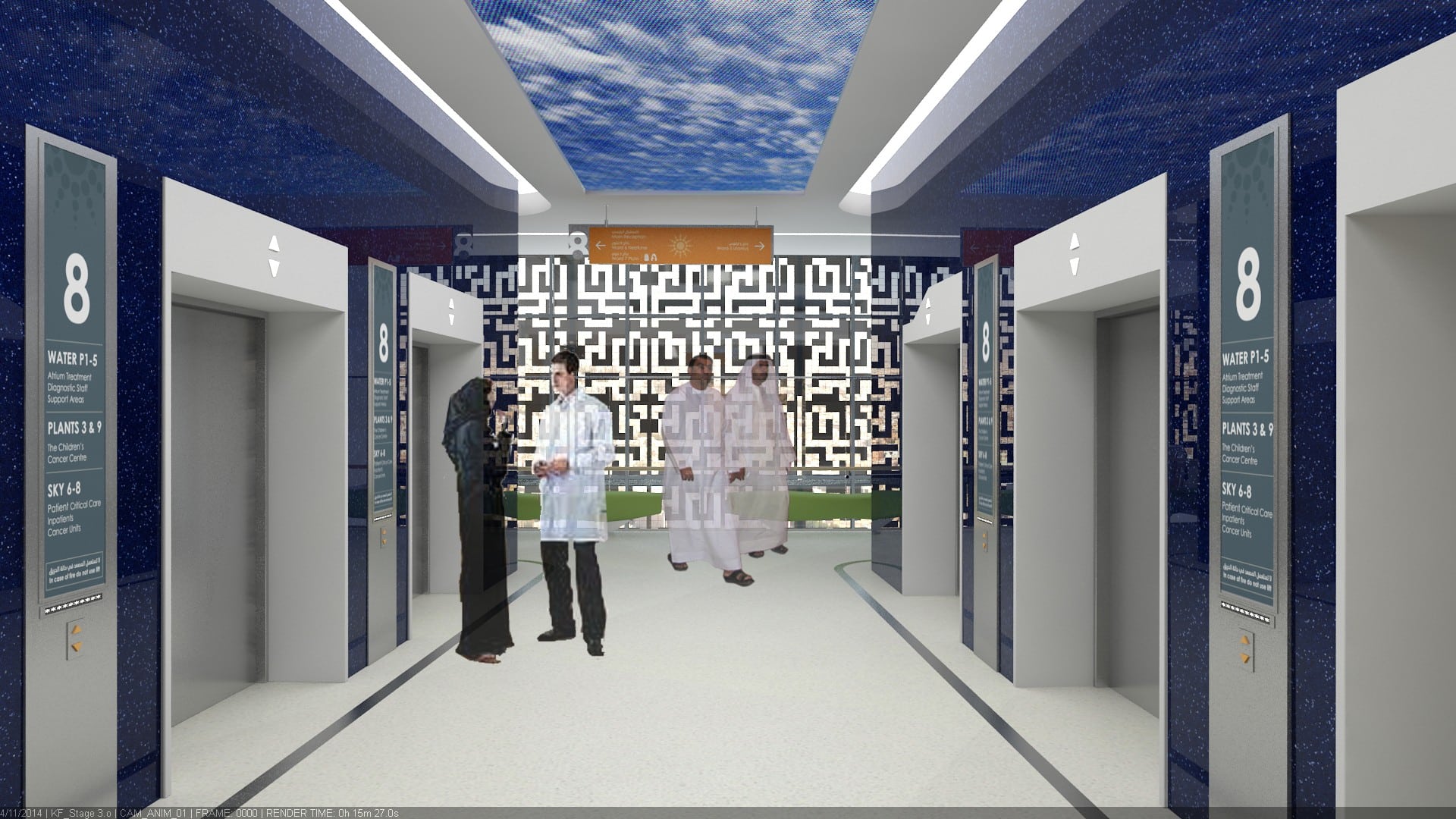
Contextual Design through Socio-Cultural and Landscape Integration
Great care has been taken in the design to focus on making the TCPH a comfortable and homely place of cheer and hope for the young patients and their families/ care-givers. Landscape has been integrated at multiple levels in the building viz. around inclined columns fronting the recessed exterior or the ground floor, at the podium level to create staff gardens, in between the towers to create patients’ gardens topped by iconic roof structure. The cheerful child-friendly interiors have special areas allocated for prayers and other customs. The curtain wall glazing for the three towers is faced by contemporary laser cut metal versions of traditional Mashrabiya screens displaying geometric patterns which are backlit in vibrant rainbow colors at night. During the day, these help in shading from the harsh Saudi sun, as do other shading devices like stone cladding, louvers and fins used as part of the façade system. Ample supportive family spaces throughout the public and patient areas help in creating an inclusive approach towards the care of sick children and young people.
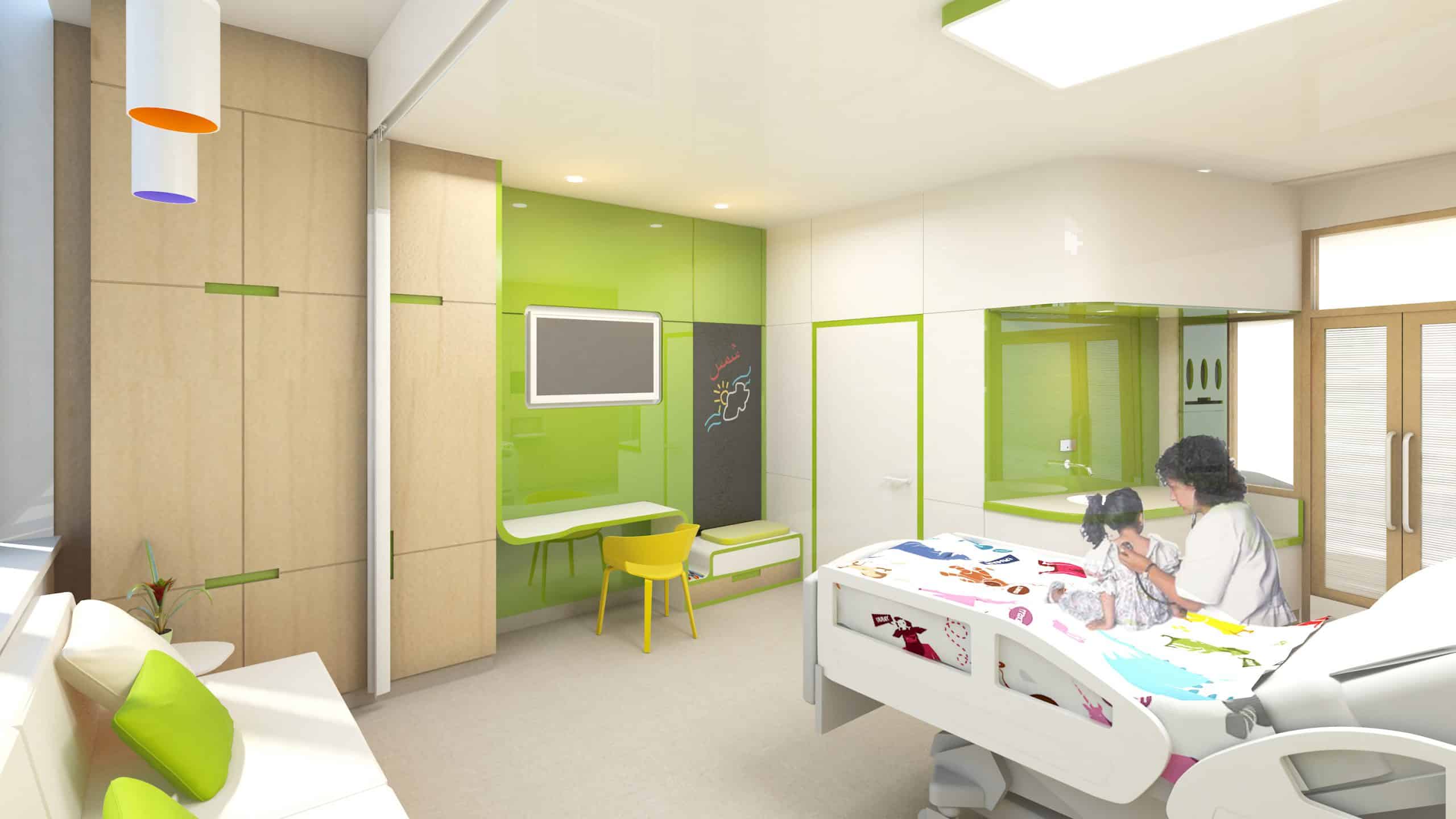
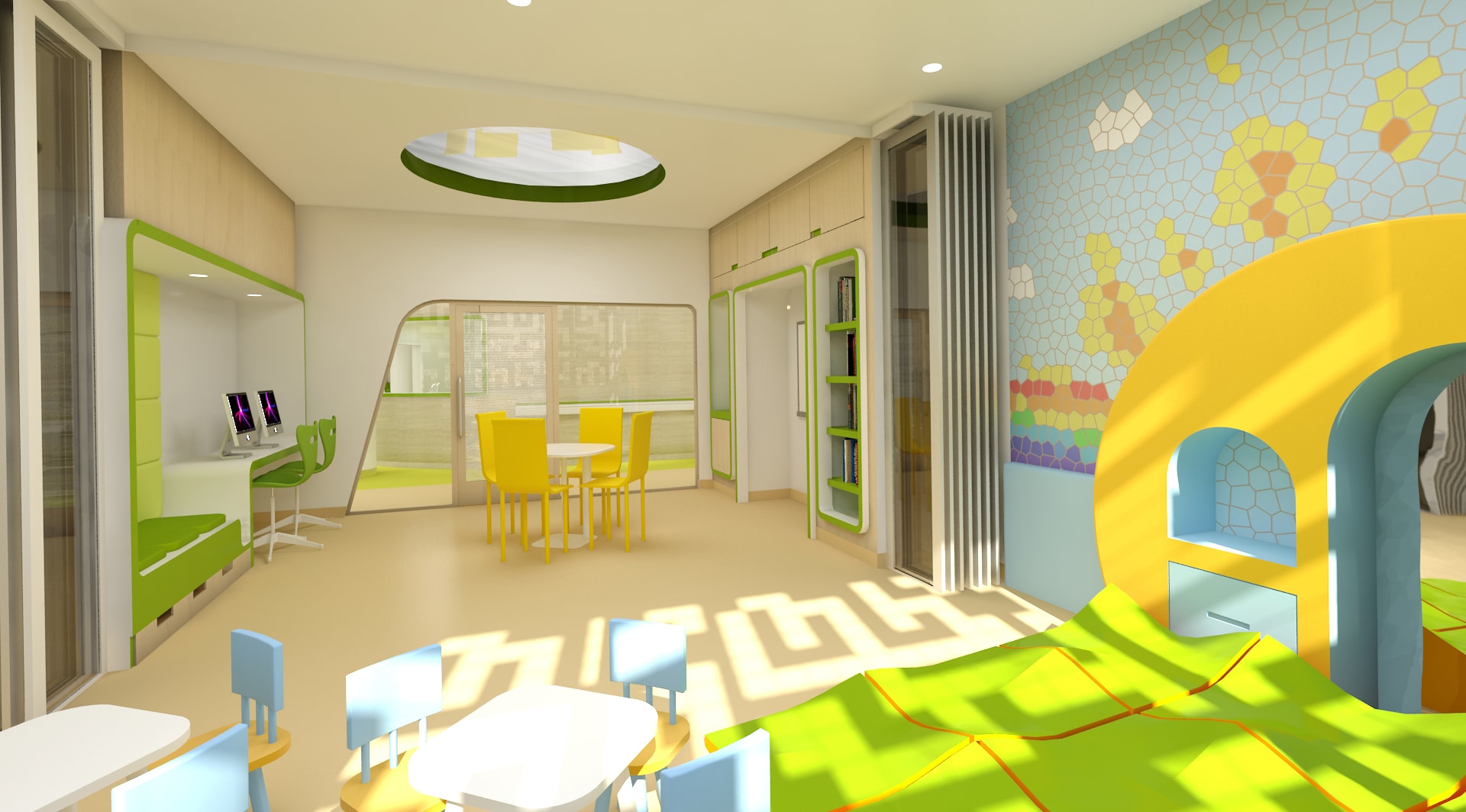
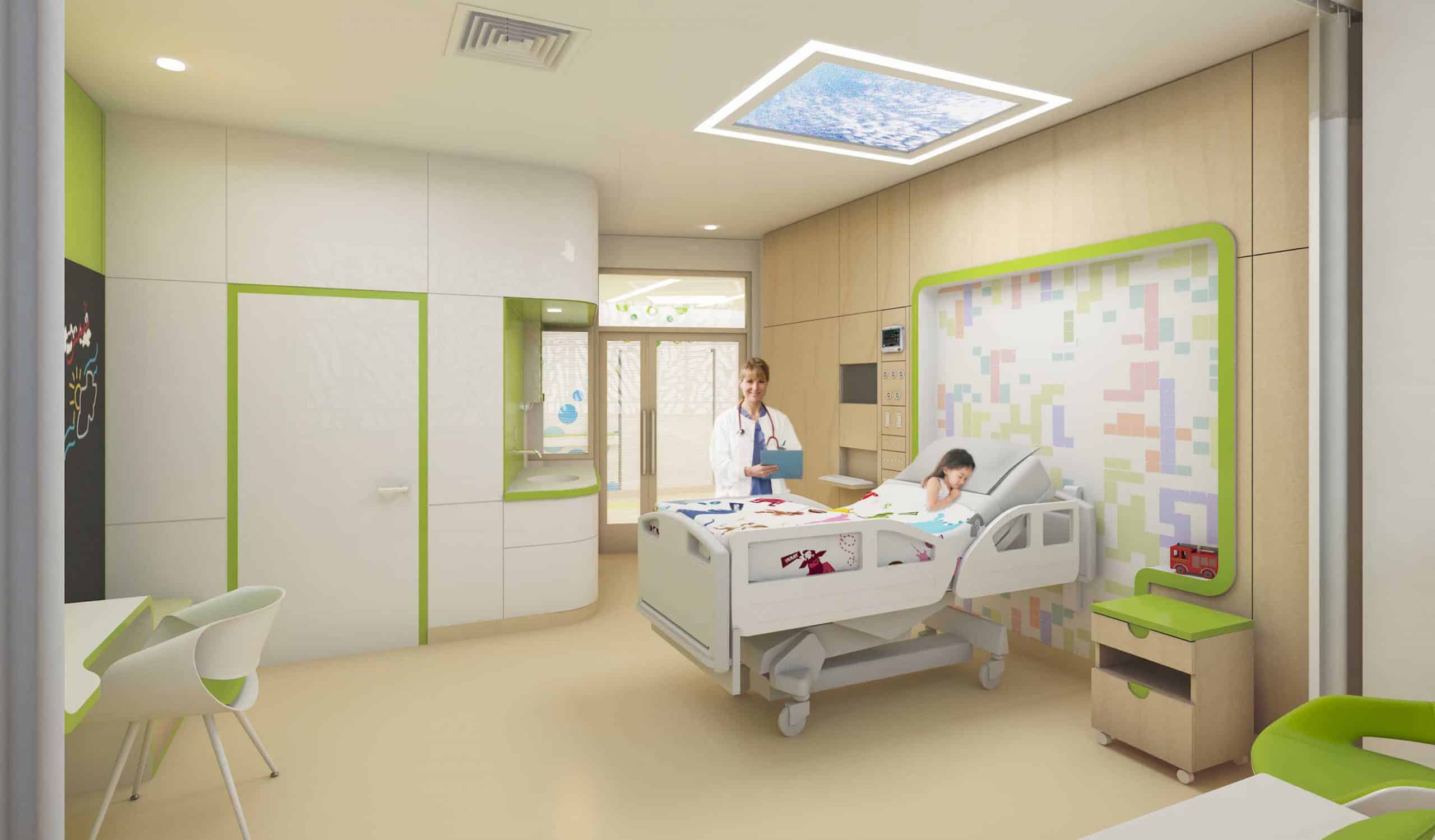
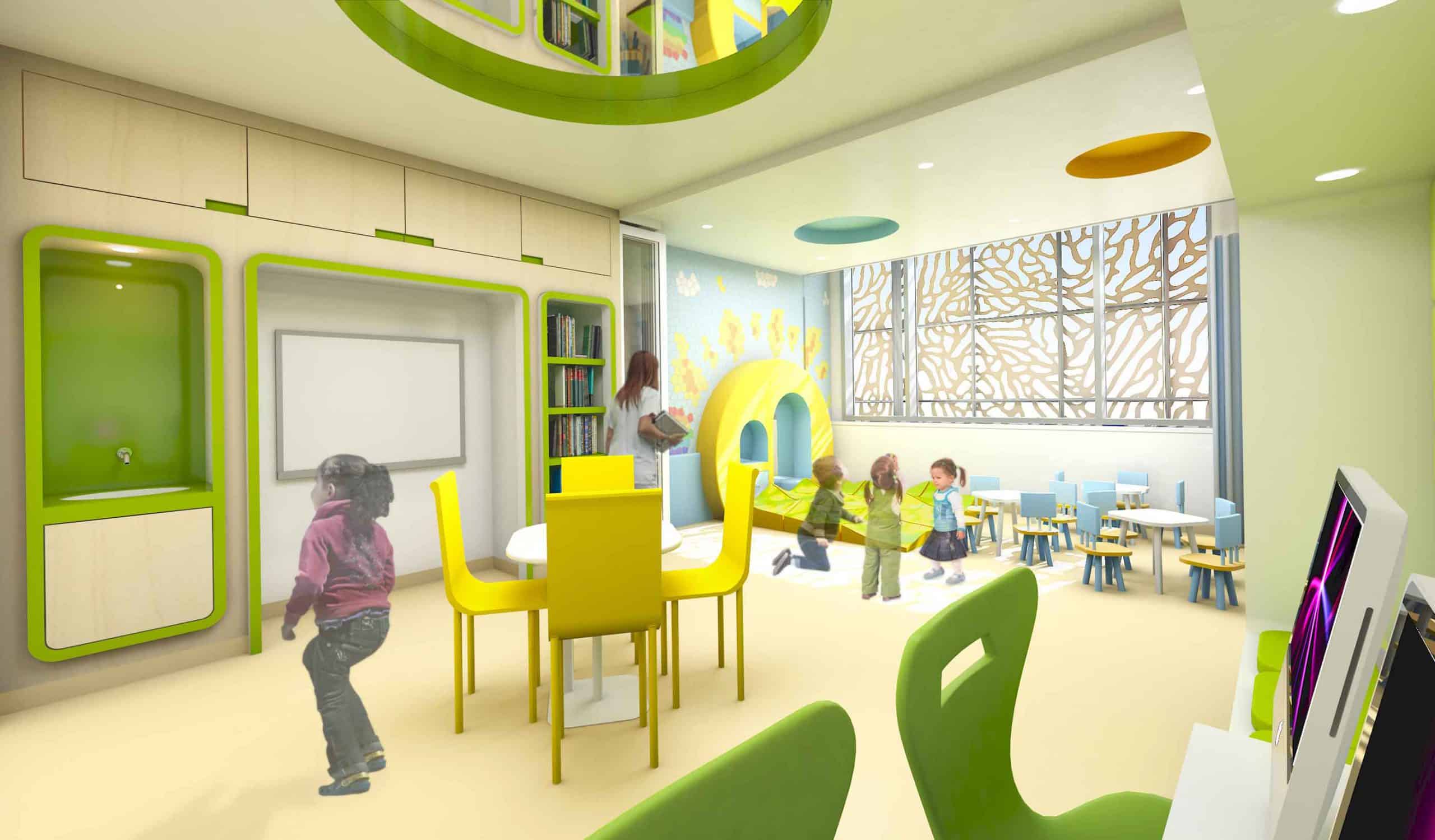
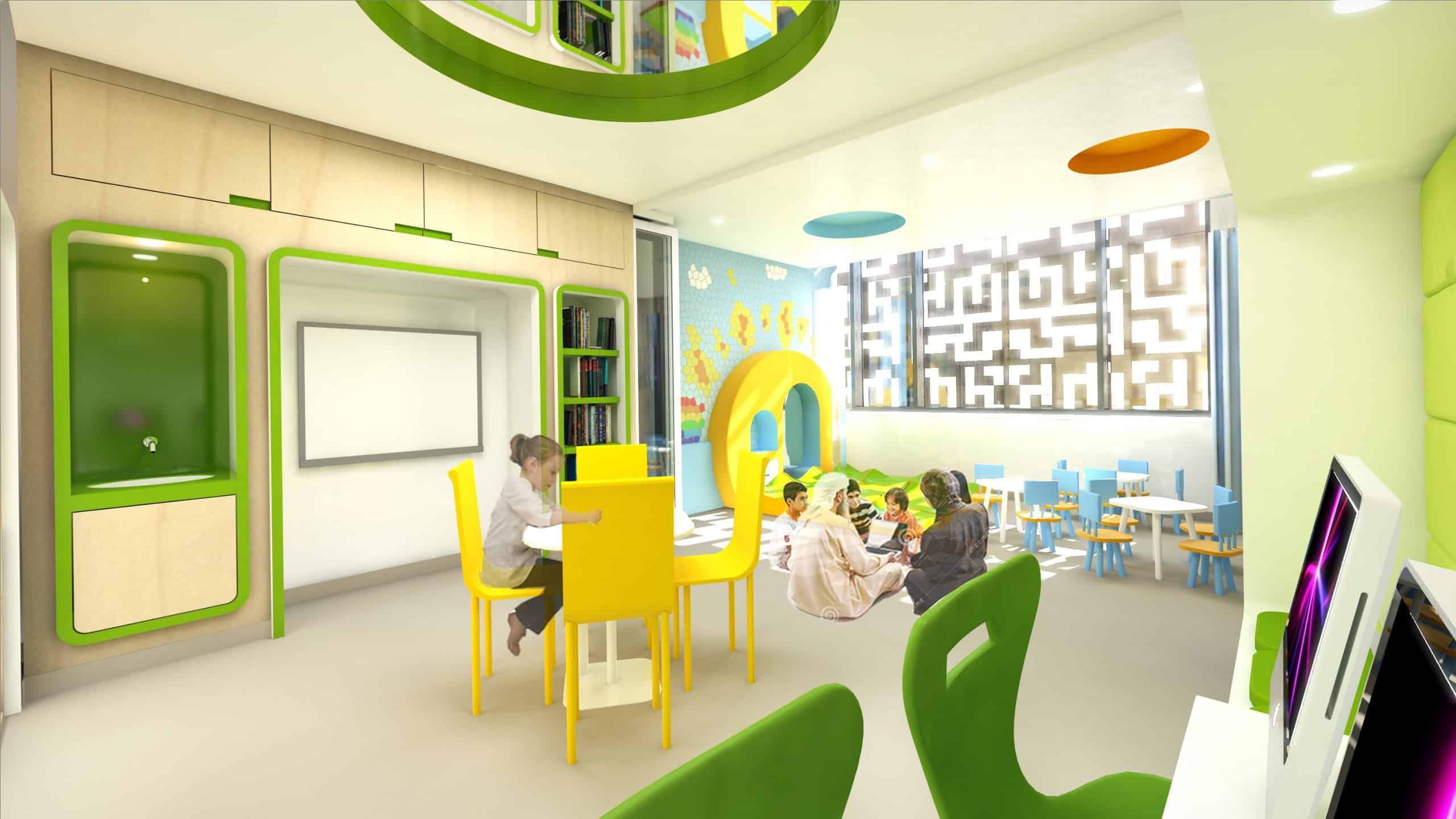
"A Contextually Integrated Approach to Cutting-Edge Healthcare Design.”

